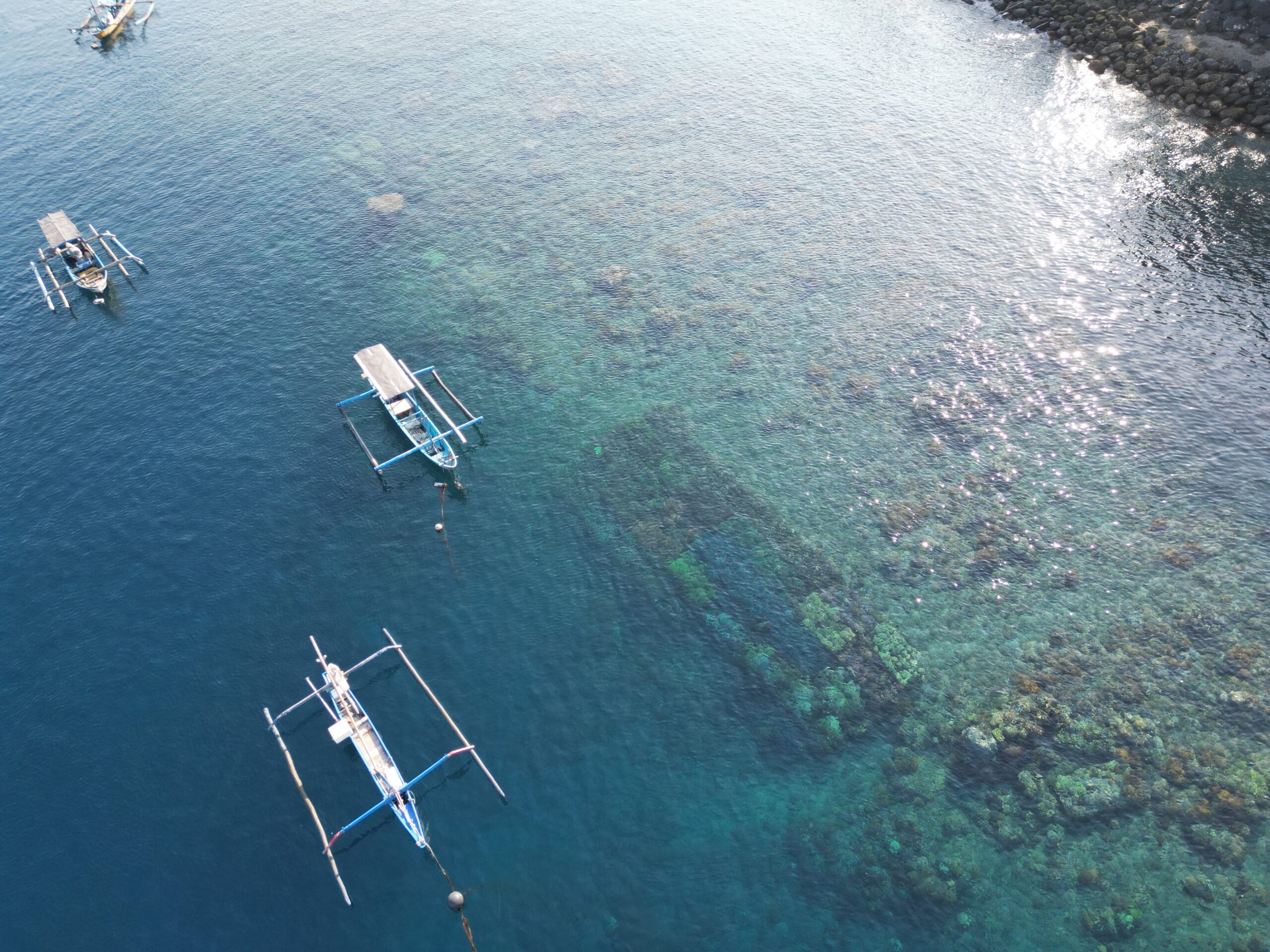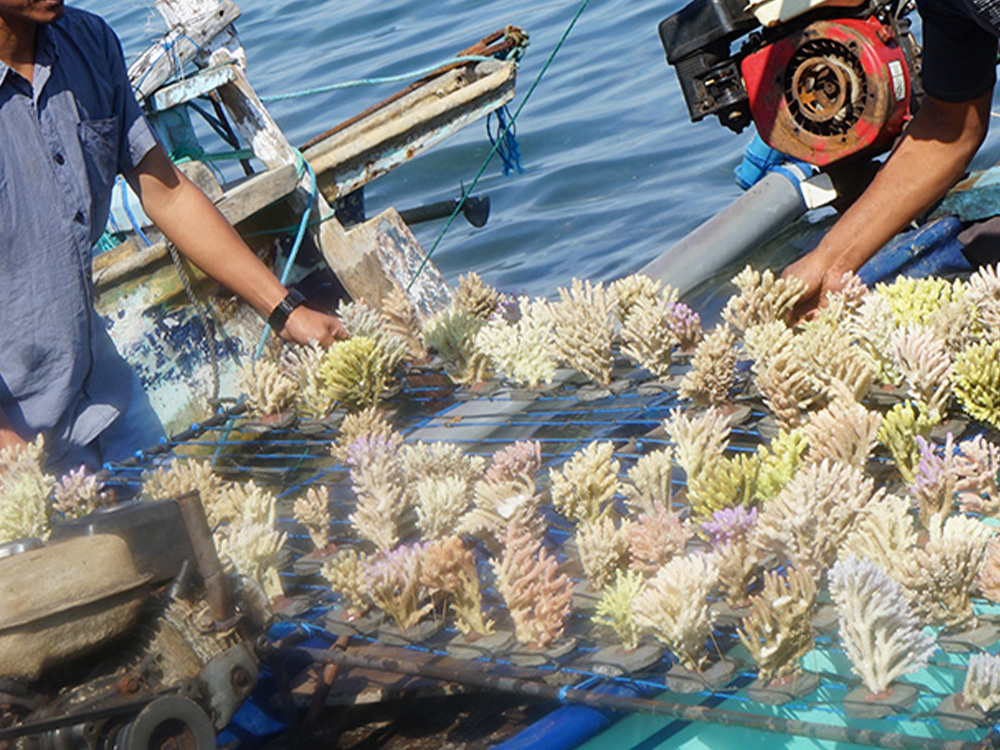Coral reforestation in severely damaged reefs through diver intervention is an urgent measure to restore the ecological stability of marine ecosystems. Divers, who are present on-site daily, play a crucial role by placing live coral fragments on the reefs. These fragments are sourced from corals that have been broken off due to environmental influences, tourism, or unwitting local activities, or from those that would otherwise perish lying unsupported in the sand.
The implementation of reforestation measures is carried out by experienced divers who regularly visit severely damaged reefs. Divers identify broken coral fragments, caused by both natural and human-made influences, and securely attach them to reef structures using appropriate techniques. Special attention is paid to selecting suitable locations and ensuring stable attachment to maximize the success of reforestation efforts.
Coral reforestation is crucial to minimize the negative impacts of environmental influences, tourism, and local human activities on reef ecosystems. The regular presence of divers on-site allows for efficient identification and rescue of broken coral fragments that would otherwise be lost without human intervention. By placing these live coral fragments, not only is the structural integrity of the reefs restored, but also a contribution is made to promoting biodiversity in these damaged ecosystems.
Long-term monitoring and evaluation of reforestation efforts are essential to quantify the success of these endeavors. Regular assessment of coral populations, their growth rates, and overall health allows for assessing the effectiveness of reforestation measures and making adjustments to achieve optimal results.
Reforesting corals in severely damaged reefs through diver intervention is a promising strategy to restore the ecological resilience of marine habitats. Collaboration between divers on-site, scientific researchers, and environmental conservation organizations is crucial to develop and implement sustainable reforestation practices that can contribute to the long-term protection of these threatened ecosystems.

